

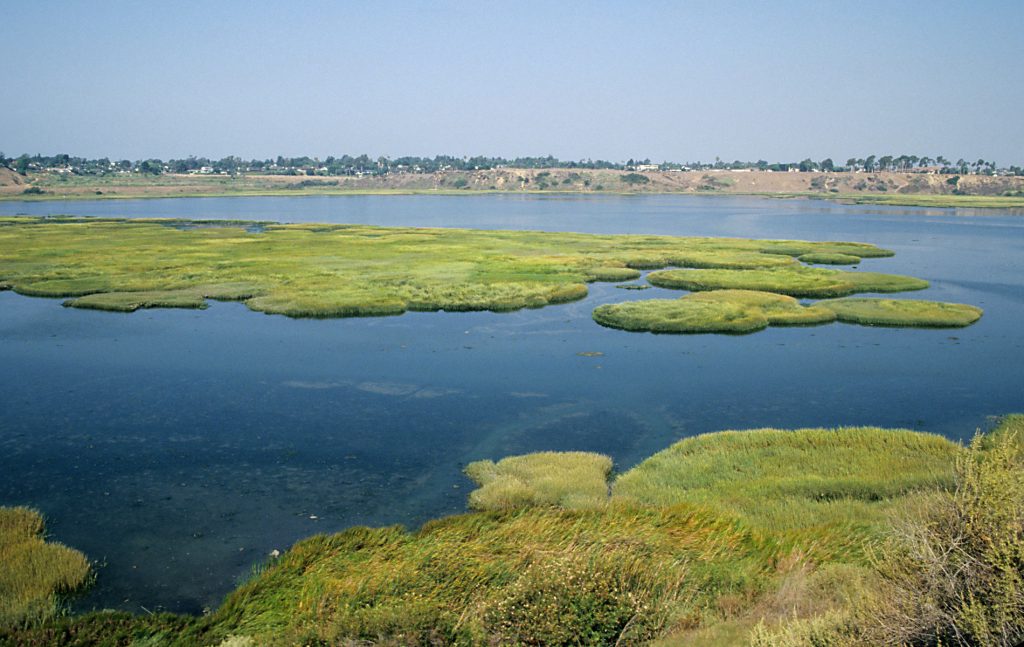
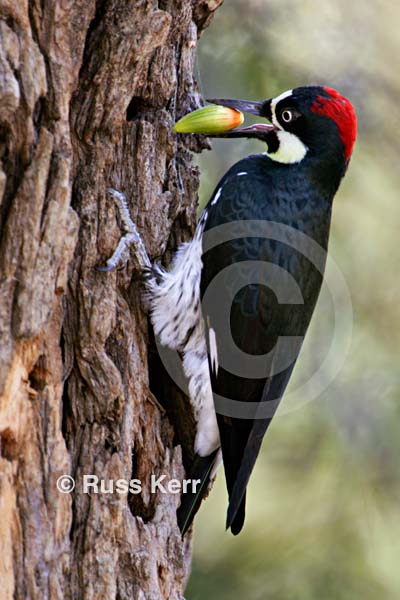
The noisy Acorn Woodpeckers, with their “clown” faces, live in groups and can be easily heard with their “yaka, yaka, yaka” calls. They harvest acorns in the fall and then store them in tightly packed holes (so squirrels can’t get them) made in mature or dead trees.
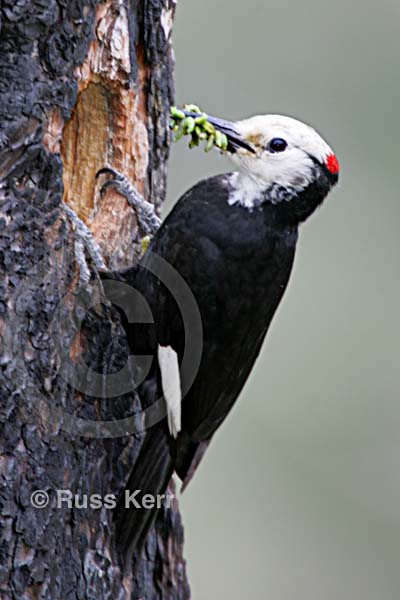
The White-headed Woodpecker lives in the pine forests of the western states. This male is bringing a banquet of worms to its nest inside a tree cavity to feed its chicks.
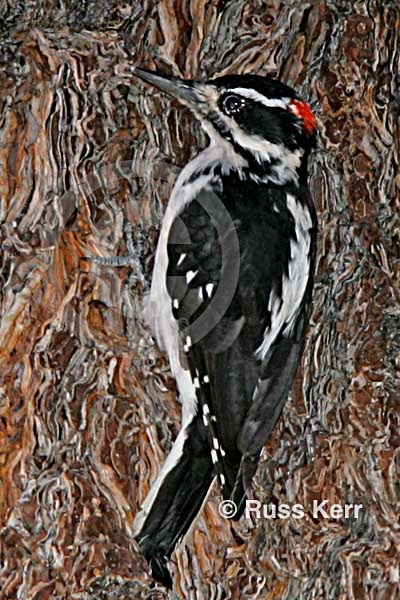
The larger Hairy Woodpecker (9’ tall) is similar to the smaller Downey Woodpecker (6 1/2” tall), both having the white stripe down the middle of their back to help identify them.
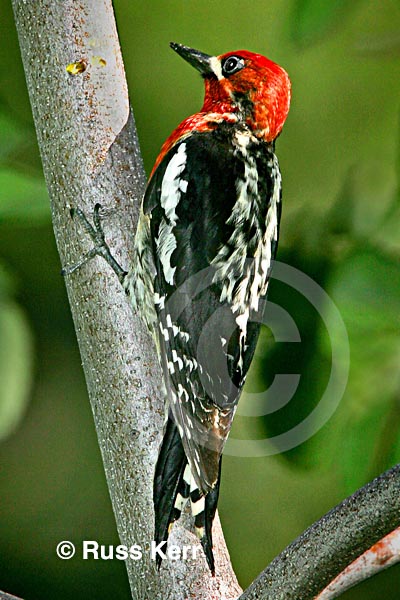
The Red-breasted Sapsucker is a richly colored woodpecker with its entire head, throat and breast bright red. They drill holes around a tree trunk to drink the sap, returning many times as the sap accumulates.
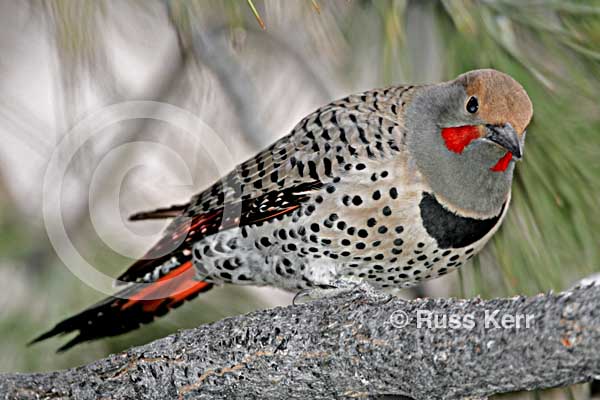
The large 13” Northern Flicker is very distinctive with bright salmon colors under its wing and tail feathers. Only the male shows this red mustache stripe, but both adult sexes have the black bib.
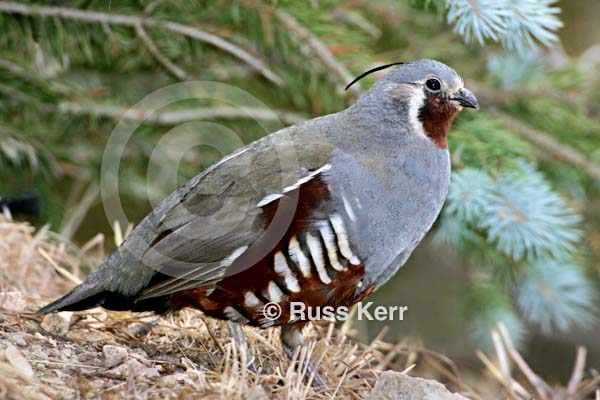
The Mountain Quail inhabits the brushy foothills and mountains in dense chaparral and manzanita thickets. They have long thin plumes on their head, often combining into one, which usually stand straight up.
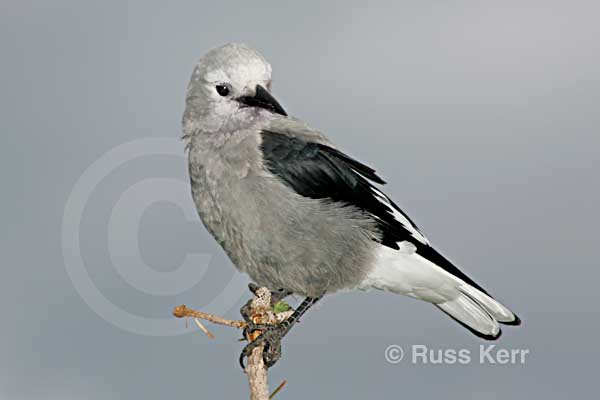
The Clark’s Nutcracker has a long pointed bill to gather large numbers of pine seeds and bury them to eat in the winter. They will occasionally irrupt in great numbers, related to failure of pine seed crops.
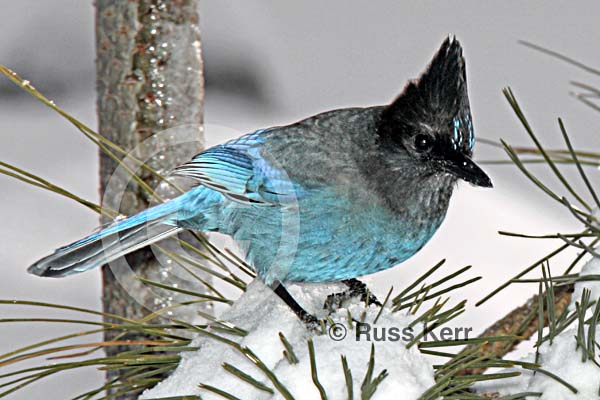
The Steller’s Jay is the only western jay with a crest. They are beautiful, but noisy with their harsh calls, especially around campsites.

The Western Scrub Jay is another noisy blue-feathered jay. They eat mainly insects in the summer, but also bury many more acorns in the fall than they can eat, helping to regenerate oak forests.
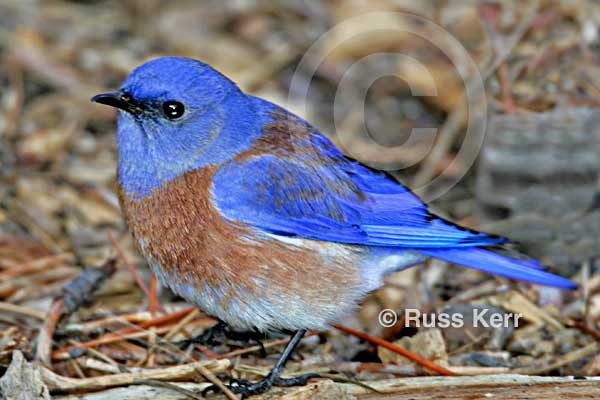
This male Western Bluebird in prime breeding plumage is a beautiful sight. They will nest in tree holes, or in nesting boxes which many people have put up to encourage their successful breeding.
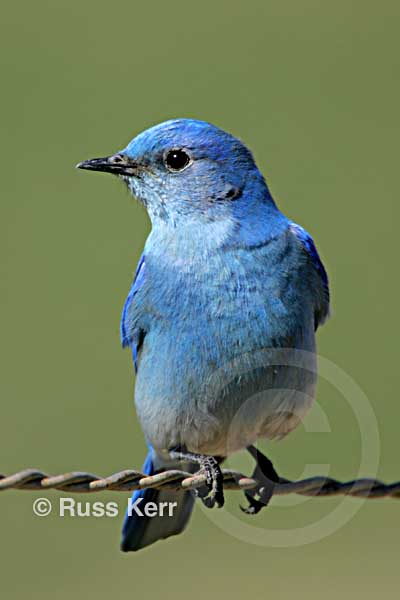
These are beautiful birds clothed in different shades of blue.
Mountain Bluebirds, as this one, hunt in wide open spaces from perches, then hover low over the ground to drop down on insects.

This is the male Western Tanager decked out in his beautiful breeding plumage to attract a female, with rich colors of red, yellow and black. Western Tanagers are frequently seen in early summer.

This Mountain Chickadee is bringing a varied selection to feed its chicks inside a cavity nest. They are very active birds, usually making harsh calls, but in breeding season the male whistles a beautiful 3-part song that seems to say “oh pretty baby” to attract a female. They will also nest in Bluebird boxes.
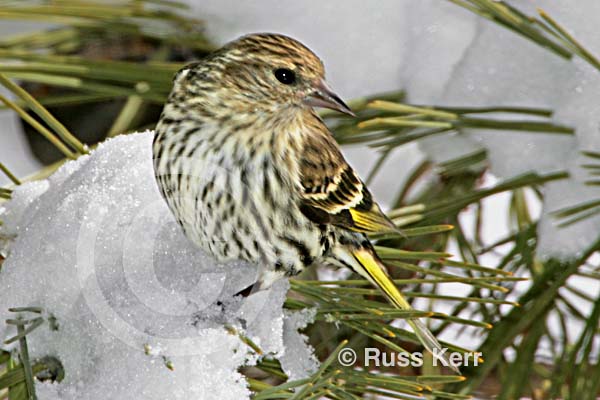
The Pine Siskin has a very sharp slender bill, with bright yellow edging in its wing and tail feathers. They will often flock and feed with goldfinches.
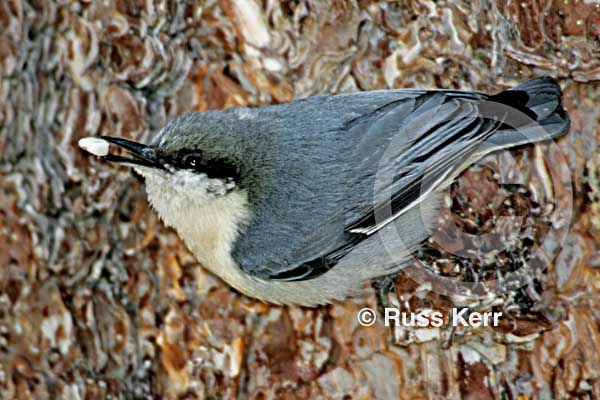
The Pygmy Nuthatches are quite small, about 4” from beak to tail. They travel in groups and have a blue-gray back and a distinct black eye-line above a white chest and body. This Pygmy Nuthatch is busy looking to hide a seed under the crevice of a pine tree’s bark.
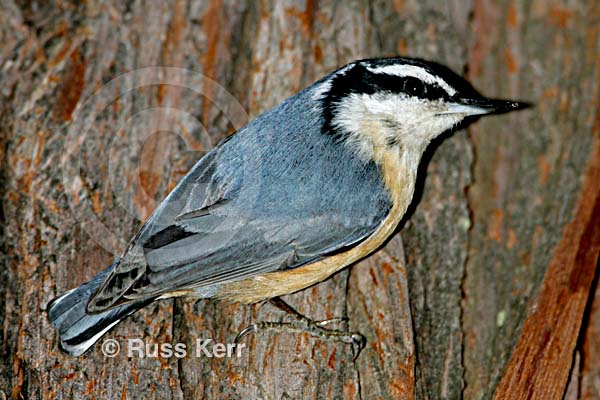
This beautiful Red-Breasted Nuthatch is quite colorful with its blue-gray back and rusty breast and belly. Besides eating and storing seeds, they also feed on bark insects.
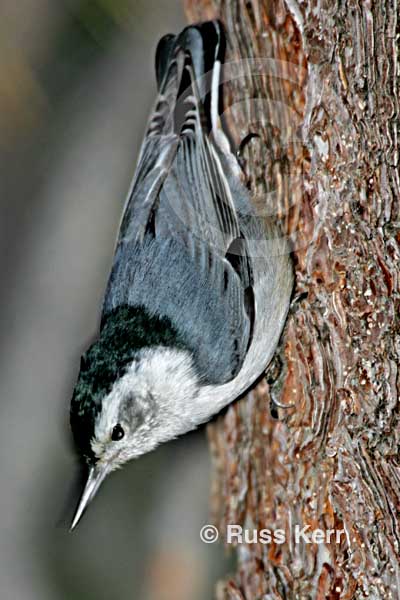
The White-breasted Nuthatch is also blue-gray above and white below, but is the only nuthatch with an entirely white face. This photo shows the typical head-down behavior of a nuthatch.
Russ’ celebrated collection of photographs have been cherished by bird enthusiasts, naturalists, conservationists, educators and photo specialists all over the world.
For decades, Russ’s images have have been licensed, framed and printed and displayed in high profile places for many to enjoy.
If you would like to see more images of a particular subject, please contact Russ HERE..
Also, if you would like to own a digital, high resolution copy for your web site, textbook, or to be printed and framed, send a message to Russ HERE. Be sure to include the photo ID you’ll find int his watermarked gallery.